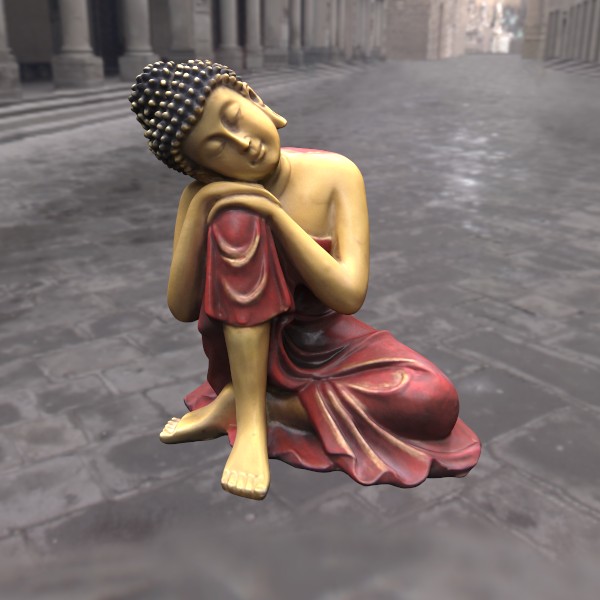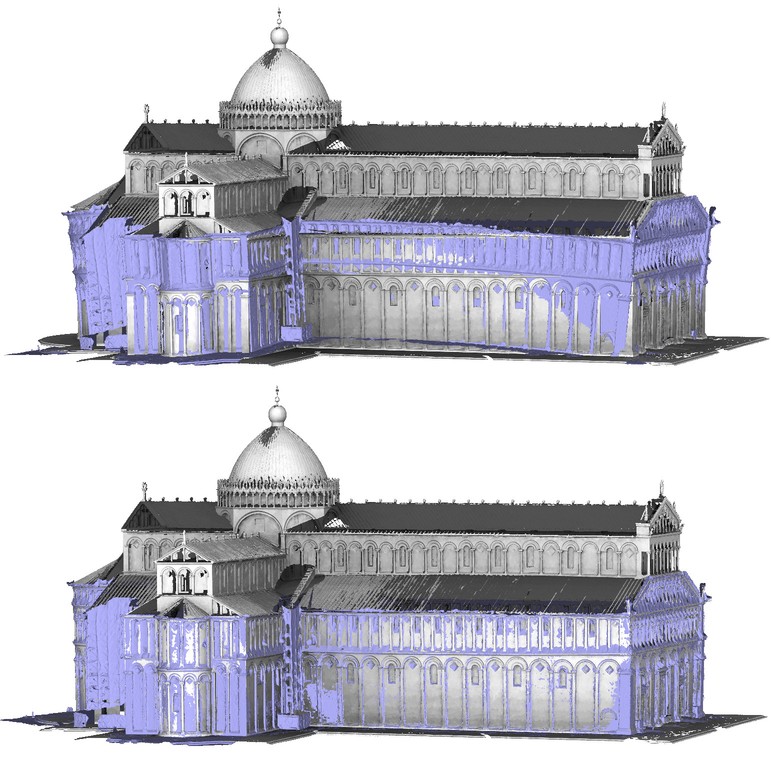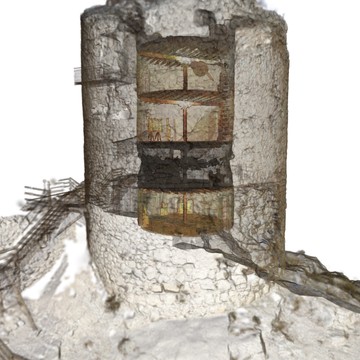Acquisition and rendering of the surface appearance

Design and implementation of techniques to enrich 3D models of real objects with the surface appearance information using video sequences acquired in general and fixed lighting conditions. The research involves two topics: the registration of the videos on the 3D model unsing Mutual Information and gradient maps to compute the camera parameters for the projection of the color over the geometry (Link); the estimation of complex reflectance models, like the SVBRDF (Link) and the Surface Light Field (Link), using statistical operations.
Reflectance Transformation Imaging (RTI)
 Design and implementation of the official viewer for images acquired with RTI tecniques (Link). Design and implementation of algorithms to improve the perception of the object details depicted in a image acquired with RTI techniques (Link). Improving the dissemination of this new multimedia data in the web with a web viewer for high resolution RTI images using WebGL (Link). Design and creation of a portable dome with LED lights to acquire automatically RTI images of medium-small objects (Link). Implementation of web-based museum kiosks for the interactive presentation of ancient coins collection by means of RTI images (two kiosks are installed at the Palazzo Blu and Museo Nazionale San Matteo in Pisa) (Link1, Link2).
Design and implementation of the official viewer for images acquired with RTI tecniques (Link). Design and implementation of algorithms to improve the perception of the object details depicted in a image acquired with RTI techniques (Link). Improving the dissemination of this new multimedia data in the web with a web viewer for high resolution RTI images using WebGL (Link). Design and creation of a portable dome with LED lights to acquire automatically RTI images of medium-small objects (Link). Implementation of web-based museum kiosks for the interactive presentation of ancient coins collection by means of RTI images (two kiosks are installed at the Palazzo Blu and Museo Nazionale San Matteo in Pisa) (Link1, Link2).
Analysis and visualization of temporal 3D dataset
 Development of a new alignment algorithm to perform non-rigid registration between 3D models reconstructed from photos to correct the low frequency deformation introduced by the Multi-View stereo software (Link). The algorihtm was used to study the panel deformation of the Leonardo da Vinci's "Adorazione dei Magi" (Link).
Implementation of new innovative algorithms for the automatic detection of geometric changes among point clouds of the same environment acquired in different time (Link). The algorithm compares locally the implicit surface of the two point clouds to obtain a more robust segmentation of the static and dynamic areas of the input data. The computed segmentation can be used to improve the visualization of the temporal evolution of a 3D scene using the insights on the Change Blindness phenomenon(Link).
Development of a new alignment algorithm to perform non-rigid registration between 3D models reconstructed from photos to correct the low frequency deformation introduced by the Multi-View stereo software (Link). The algorihtm was used to study the panel deformation of the Leonardo da Vinci's "Adorazione dei Magi" (Link).
Implementation of new innovative algorithms for the automatic detection of geometric changes among point clouds of the same environment acquired in different time (Link). The algorithm compares locally the implicit surface of the two point clouds to obtain a more robust segmentation of the static and dynamic areas of the input data. The computed segmentation can be used to improve the visualization of the temporal evolution of a 3D scene using the insights on the Change Blindness phenomenon(Link).
Real-Time rendering
 Development of new algorithms to approximate the global illumination effects of data acquired with 3D scanning technologies to improve their rendering quality (Link). Implementation of a rendering algorithm to combine trasparency and point cloud rendering (Link). Development of the first Inverse Tone Mapping Operator for point cloud for the real-time relighting of virtual object inside a real cloud using a new Point-Based Global Illumination algorithm (Link).
Development of new algorithms to approximate the global illumination effects of data acquired with 3D scanning technologies to improve their rendering quality (Link). Implementation of a rendering algorithm to combine trasparency and point cloud rendering (Link). Development of the first Inverse Tone Mapping Operator for point cloud for the real-time relighting of virtual object inside a real cloud using a new Point-Based Global Illumination algorithm (Link).
Advanced User Interface
 Design and development of a method to adapt the sensor layout of common capacitive multi-touch sensors to more complex 3D surfaces, ensuring high-resolution, robust multi-touch detection. The method automatically computes a grid of transmitter and receiver electrodes with as regular distribution as possible over a general 3D shape showing a precise and robust multi-touch detection with good Signal-to-Noise Ratio and spatial accuracy of about 1mm (Link).
Design and development of a method to adapt the sensor layout of common capacitive multi-touch sensors to more complex 3D surfaces, ensuring high-resolution, robust multi-touch detection. The method automatically computes a grid of transmitter and receiver electrodes with as regular distribution as possible over a general 3D shape showing a precise and robust multi-touch detection with good Signal-to-Noise Ratio and spatial accuracy of about 1mm (Link).Development of a prototype to explore the coupling of VR consumer technologies with the direct manipulation of 3D-printed artefacts to create an interactive tangible user interface in the virtual environment using capacitive sensing technologies. The system permits the creation of virtual experiences where the user, with their hands, can change the virtual appearance of the object using a set of personalization actions selectable from a physical 3D-printed palette (Figure 1), such as, for example, to paint over the object surface or to attach additional virtual objects (Link).